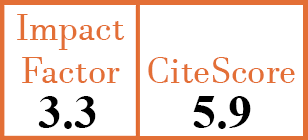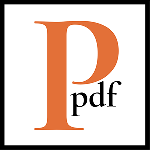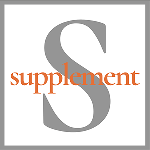Full Papers
Abatacept therapy reduces CD28+CXCR5+ follicular helper-like T cells in patients with rheumatoid arthritis
S. Fukuyo1, S. Nakayamada2, S. Iwata3, S. Kubo4, K. Saito5, Y. Tanaka6
- The First Department of Internal Medicine, University of Occupational and Environmental Health, Fukuoka, Japan.
- The First Department of Internal Medicine, University of Occupational and Environmental Health, Fukuoka, Japan.
- The First Department of Internal Medicine, University of Occupational and Environmental Health, Fukuoka, Japan.
- The First Department of Internal Medicine, University of Occupational and Environmental Health, Fukuoka, Japan.
- The First Department of Internal Medicine, University of Occupational and Environmental Health, Fukuoka, Japan.
- The First Department of Internal Medicine, University of Occupational and Environmental Health, Fukuoka, Japan. tanaka@med.uoeh-u.ac.jp
CER9851
2017 Vol.35, N°4
PI 0562, PF 0570
Full Papers
Free to view
(click on article PDF icon to read the article)
PMID: 28516880 [PubMed]
Received: 14/08/2016
Accepted : 10/11/2016
In Press: 27/04/2017
Published: 13/07/2017
Abstract
OBJECTIVES:
The characteristics of T cells targeted by abatacept (ABT) in cases of rheumatoid arthritis (RA) are still unknown. The goal of the study was to determine the pathogenicity of T cells and the predictors of therapeutic effects of ABT.
METHODS:
We analysed the peripheral T cell phenotype of 34 RA patients via flow cytometry. The correlation of the phenotypes of CD4+ T cells with clinical disease activity and change in CD4+ T cell subsets at baseline and 24 weeks after ABT treatment were evaluated.
RESULTS:
RA patients showed an increase in the proportion of CD28- cells among CD4+ cells, which was significantly high in patients who had not achieved remission after ABT therapy. The proportions of CD4+CXCR5+ T follicular helper-like (Tfh-like) cells increased in RA patients compared to healthy donors. The proportions of Tfh-like cells among CD4+CD28+ cells were significantly higher than those among CD4+CD28- cells. The proportion of Tfh-like cells was higher in anti-cyclic citrullinated peptide antibody (ACPA)-positive patients. By contrast, the proportions of CD4+CXCR3+ T helper 1-like (Th1-like) cells and effector memory phase T cells among CD4+CD28- cells were significantly higher than those among CD4+CD28+ cells, and the proportion of these cells did not correlate with disease activity. After ABT therapy, the proportion of Tfh-like cells among CD4+CD28+ cells was significantly reduced.
CONCLUSIONS:
These results imply that CD4+ CD28+ Tfh-like cells could possibly be the targets of ABT. Conversely, CD4+ CD28- cells may be a potential predictor of treatment resistance.



